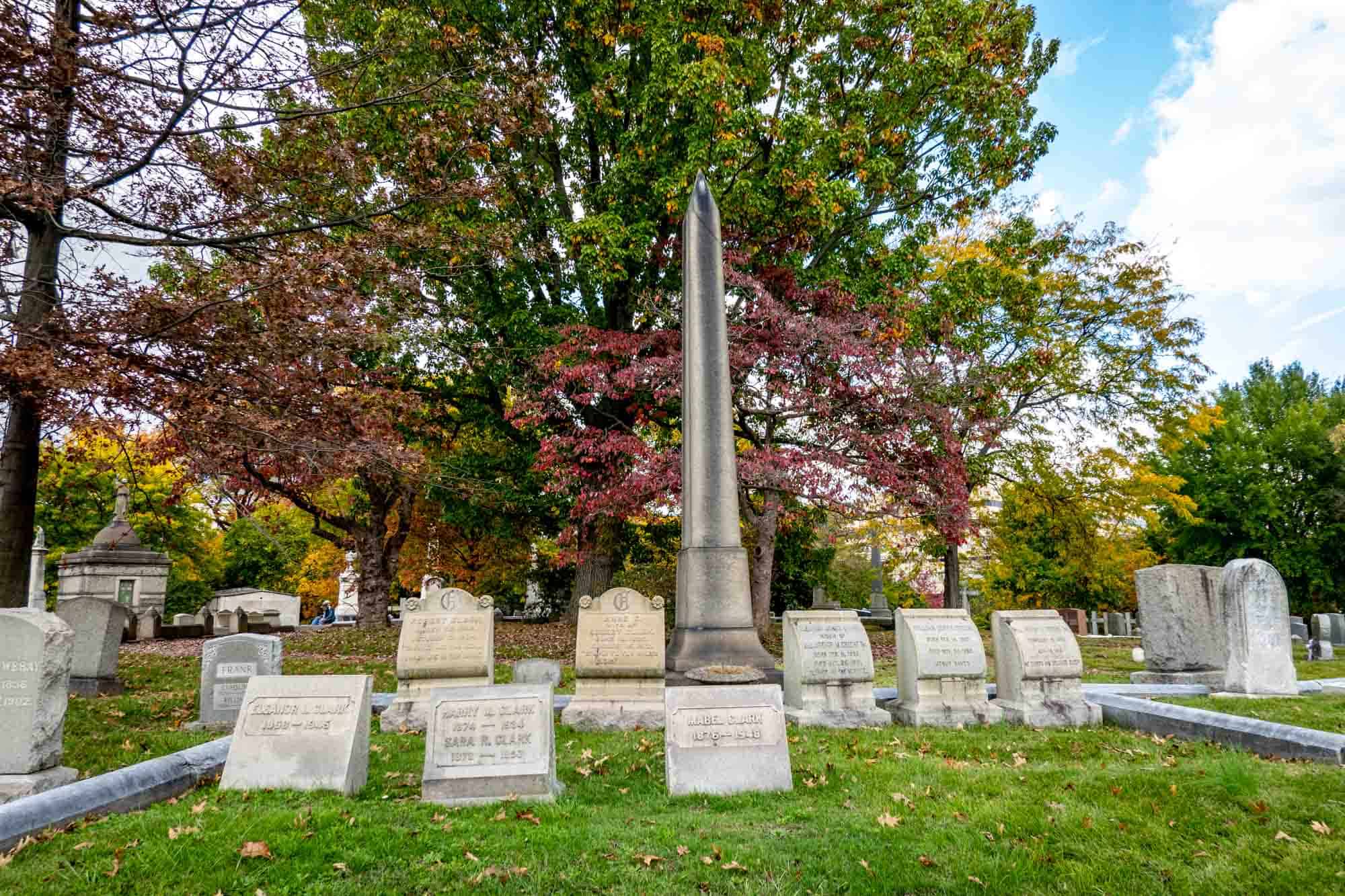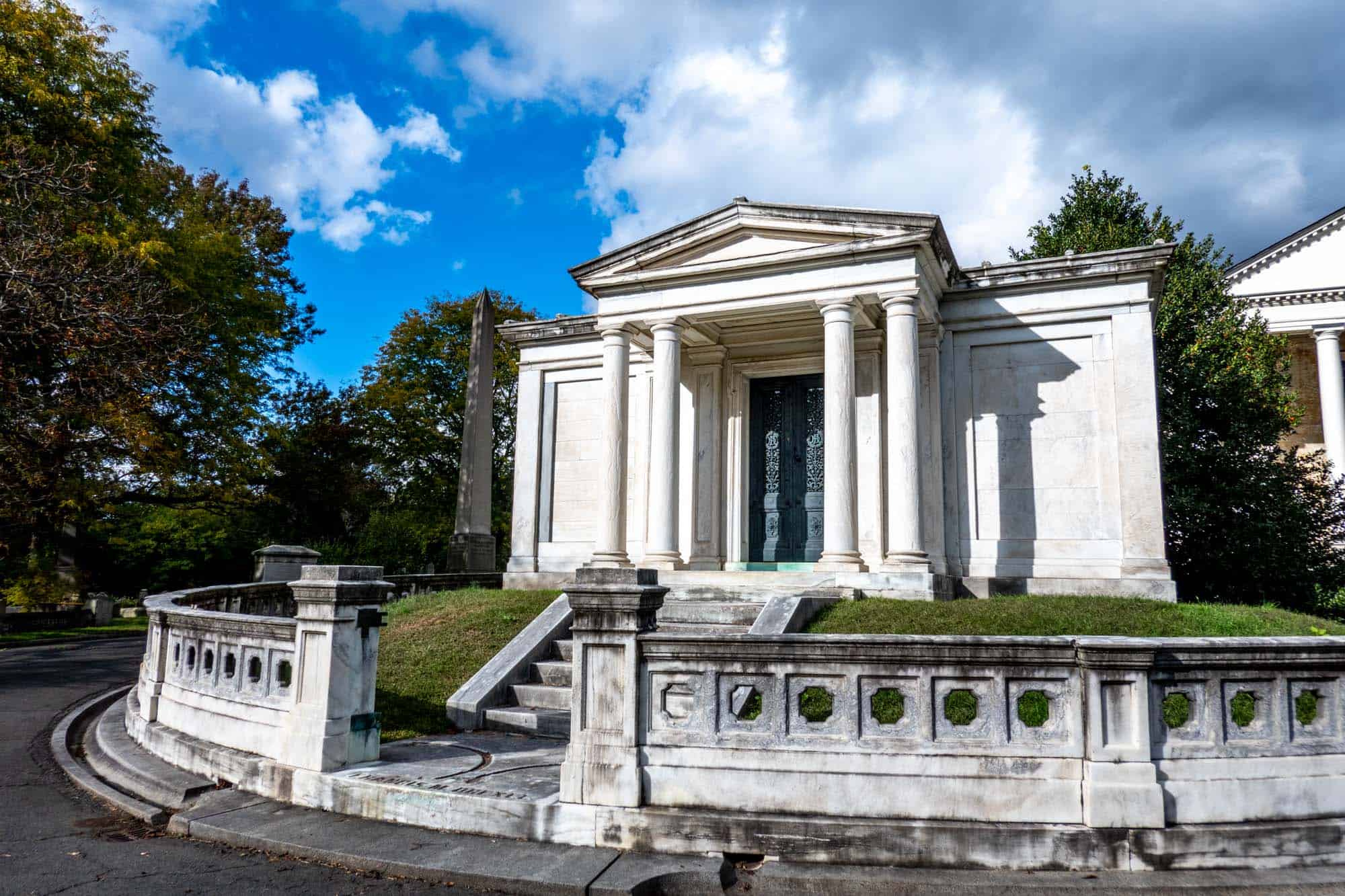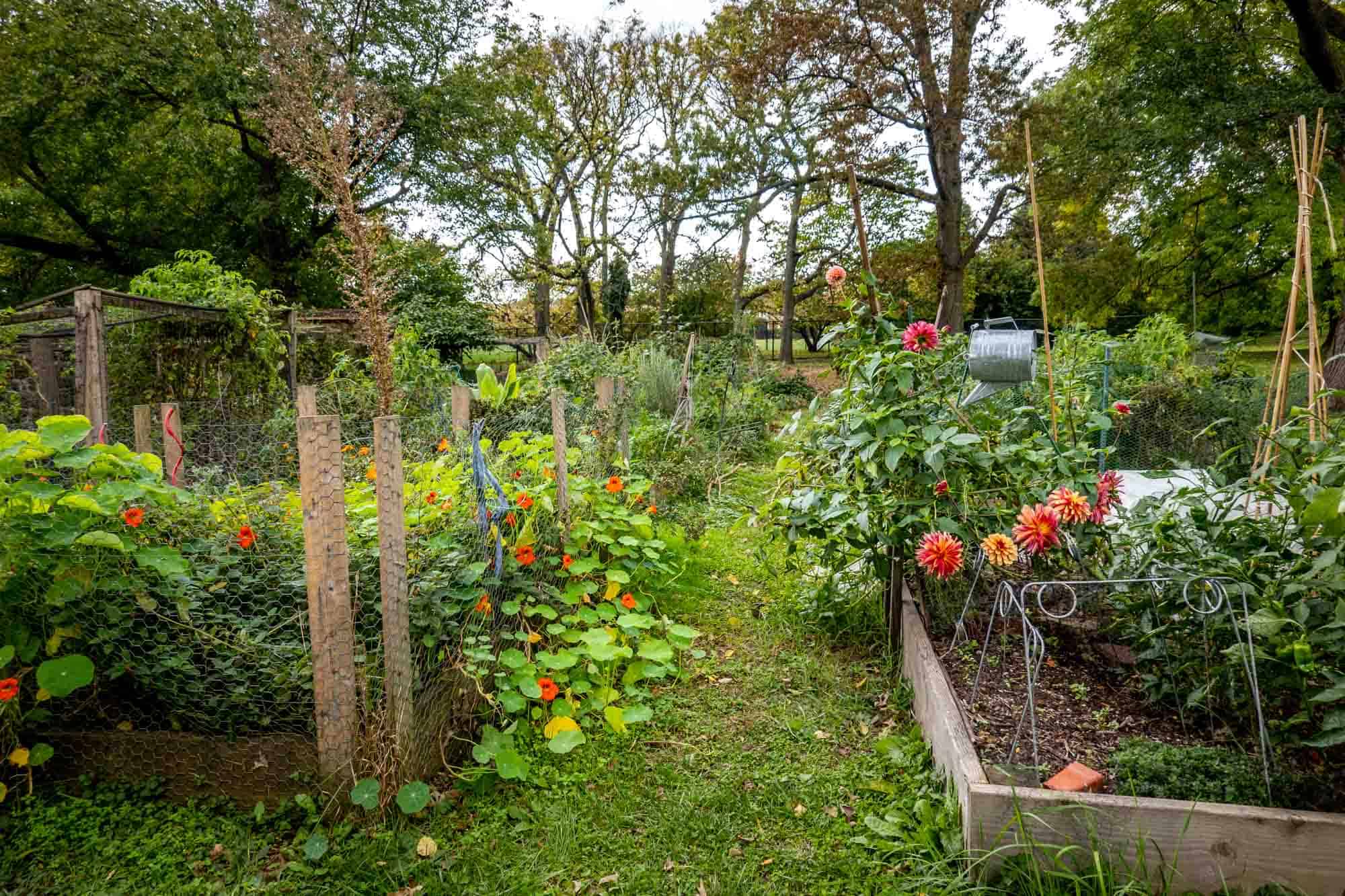It might seem unusual to think of a cemetery as a thriving community space, but that’s exactly what the The Woodlands is in West Philadelphia. For nearly 300 years, it has been an important part of the city’s history, and it remains an integral part of life here today.

The park-like setting near the University of Pennsylvania is a popular place for locals to get outside and exercise, and it hosts regular events and classes. In its spot by the Schuylkill River, the historic 54-acre property has a Federal-style mansion, a carriage house, and a stable, and it’s the final resting place of more than 30,000 people.
History and the Mansion
The property that would become The Woodlands began to take shape in 1735 when it was purchased by Andrew Hamilton, a famous attorney (not to be confused with Alexander). In just a few years, the 300-acre tract passed to his grandson William, who was responsible for much of the estate’s development.
William Hamilton built the grand mansion that The Woodlands is renowned for. Beginning in 1786 after a visit to England, he made major additions and changes to the home he had built pre-Revolution.
The alterations expanded areas for entertaining and enhanced kitchen facilities and service rooms, in addition to doubling the size of the home. The changes made the rebuilt Woodlands mansion one of the greatest architectural achievements in America at the time. The Federal style in which it was was built influenced architectural trends across city and the country for decades.

In addition to his interest in architecture, William Hamilton was a prominent botanist. His sprawling parcel of land became the perfect place to assemble a collection of plants in the new United States.
Hamilton introduced new species of plants and trees to North America for the first time and planted seeds collected on Lewis and Clark’s expeditions at the request of Thomas Jefferson. Ultimately, more than 10,000 species of plants grew on the estate. Over 700 historic trees and plants remain, which contributes to the beautiful foliage you can see on a visit to The Woodlands in the fall.
The Cemetery
Hamilton’s descendants sold off much of the estate after his death 1813. In 1840, the Woodlands Cemetery Company of Philadelphia was founded to preserve the remaining land and the existing buildings, including the mansion. Rural cemeteries where visitors could enjoy the grounds were in fashion at the time (beautiful Laurel Hill was founded just 4 years before), and the location by the river seemed like an ideal spot to give Philadelphia’s residents a suitable resting place.
The Cemetery became a popular location for outings. With its green space and carriage ways, it was a perfect place to be seen in Victorian times.

Many notable Philadelphians are buried in Woodlands Cemetery. They include authors, judges, generals, artists, politicians, and more. Some have lent their names to famous city landmarks and institutions. Some of the most notable burials include:
Commodore David Porter – On April 10, 1845, Commodore Porter was the first burial at Woodlands Cemetery, having been reinterred to bring attention to the new cemetery (a common practice). During his naval career, he fought pirates and served in the War of 1812. He was later appointed as a minister to Turkey.
Drexel family members – Francis Martin Drexel was a renowned artist who turned to a career in international finance, building the family’s fortunes and establishing a bank in the city. His son Anthony J. Drexel continued the tradition of finance and founded Drexel University.

Thomas Eakins – A student, teacher, and ultimately director at the Pennsylvania Academy of Fine Arts, Thomas Eakins is known as one of the foremost realist painters in the US. Eakins Oval near the Philadelphia Museum of Art bears his name.
Ebenezer Maxwell — A wealthy textile merchant, Maxwell built a Gothic Revival mansion in Germantown, which now operates as a Victorian house museum.
Rembrandt Peale – A noted painter, Peale is best known for his portraits of President George Washington. He also painted President Thomas Jefferson, First Lady Dolly Madison, and other prominent Americans. Some of his works hang in the Second Bank portrait Gallery in Old City.
Programs & Events

The history of the place is just one aspect of what makes the Woodlands interesting. There are regular events, classes, and workshops that keep the beautiful property an integral part of the neighborhood and Philadelphia community.
For music lovers, Music at the Mansion lets visitors into the ballroom of the Hamilton Mansion. In the exquisite space that was designed in the 1780s just for the purpose of entertainment, visitors can hear chamber music and appreciate the estate’s history.
People who love gardening can grow vegetables in the community garden on the property or get involved with the apiary. There is even a group dedicated to tending the cradle graves throughout the cemetery, ensuring they bloom with historic plants.
From bird walks and craft markets to yoga classes, happy hours, and seasonal family fun days, there is almost always something going on at The Woodlands.
Location
The Woodlands is located at 4000 Woodland Avenue. It is a short walk from the University of Pennsylvania and the University of the Sciences.
